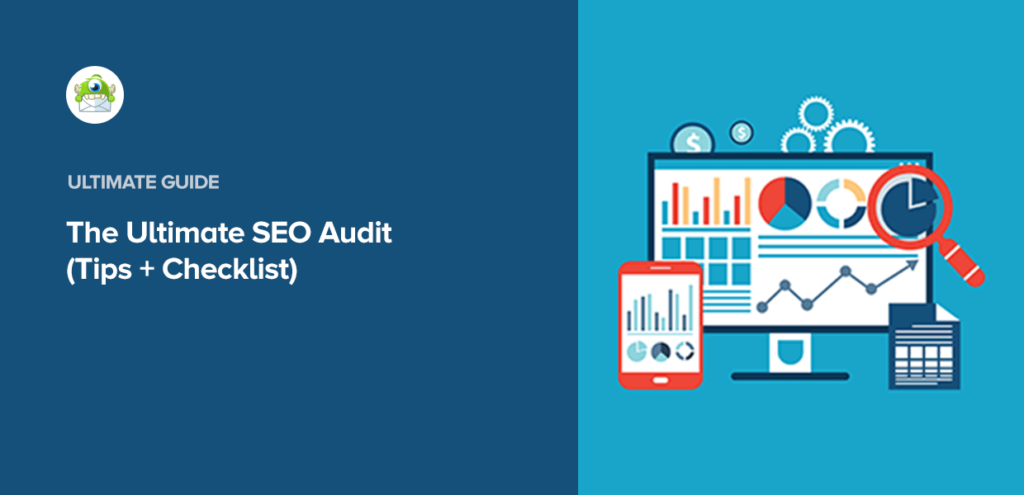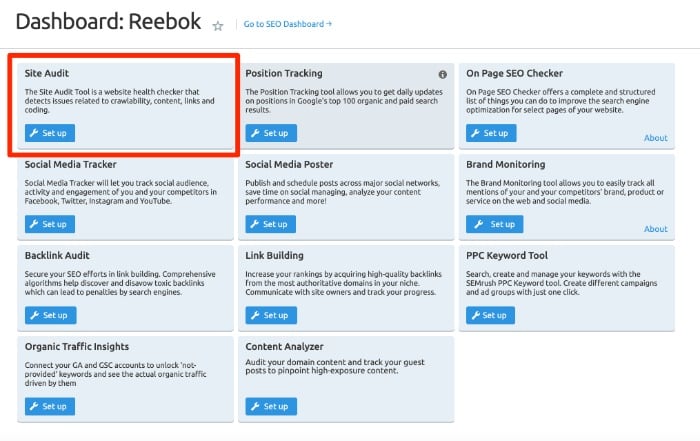
In today’s digital landscape, having a website is essential for any business or individual looking to make an impact online. But simply having a website is not enough; it needs to be optimized to maximize its visibility and reach. That’s where SEO site audits come in. By conducting a thorough analysis of your website’s performance and identifying areas for improvement, SEO site audits help you enhance your website’s functionality, visibility, and ultimately, drive more traffic to your site. In this article, we will explore the benefits of optimizing your website with SEO site audits and how they can help you take your online presence to new heights.
What is an SEO Site Audit
Definition
An SEO site audit is a comprehensive analysis of a website’s performance, visibility, and overall search engine optimization (SEO) strategies. It involves examining various aspects of a website, including technical issues, on-page and off-page optimizations, user experience, and website performance. The purpose of an SEO site audit is to identify areas that need improvement and develop an action plan to optimize the website for better search engine rankings and user experience.
Importance
An SEO site audit is crucial for any website owner or digital marketer looking to improve their online presence and drive organic traffic to their site. By conducting a site audit, you gain valuable insights into the current state of your website’s SEO and identify areas that are hindering its performance. This allows you to make informed decisions and prioritize optimization efforts to ensure that your website meets the requirements of search engines and provides a positive user experience.
Benefits of SEO Site Audits
Identifying technical issues
One of the primary benefits of conducting an SEO site audit is the ability to identify and address technical issues that may be negatively impacting your website’s performance. These issues can include broken links, slow page loading speed, poorly optimized code, duplicate content, and improper indexing by search engines. By fixing these technical issues, you can improve your website’s crawlability, indexability, and overall visibility in search engine result pages (SERPs).
Improving website performance
An SEO site audit can help you identify areas where your website’s performance can be improved. This includes optimizing page load times, reducing server response time, optimizing images and media files, and minifying CSS and JavaScript files. By improving these performance factors, you can enhance the user experience, reduce bounce rates, and increase the chances of visitors staying on your site longer.
Enhancing user experience
User experience plays a vital role in website success, and an SEO site audit helps you identify areas where improvements can be made. This includes assessing website design and layout, improving navigation and site structure, optimizing website responsiveness, and ensuring a smooth mobile user experience. By enhancing the user experience, you can increase visitor engagement, reduce bounce rates, and ultimately improve conversions.
Identifying and fixing SEO errors
An SEO site audit allows you to identify and rectify any SEO errors that may be adversely affecting your website’s rankings. This includes analyzing and optimizing your website’s content for targeted keywords, improving meta tags and headings, optimizing URL structure, and implementing internal linking strategies. By addressing these SEO errors, you can improve your website’s visibility in search engine results and attract more organic traffic.
Optimizing content for search engines
An SEO site audit provides valuable insights into the optimization of your website’s content. By conducting a thorough content analysis and keyword research, you can identify opportunities to optimize your content for targeted keywords and phrases. This includes improving keyword density, incorporating relevant keywords into headings and subheadings, and ensuring that your content provides value to your target audience. By optimizing your content, you increase the chances of your website ranking higher in search engine results and attracting more organic traffic.
Preparing for an SEO Site Audit
Understand your website goals
Before conducting an SEO site audit, it is essential to have a clear understanding of your website’s goals. This includes defining your target audience, identifying key performance indicators (KPIs), and setting realistic expectations for the audit. By aligning your audit goals with your overall business objectives, you can prioritize optimization efforts and focus on areas that will have the most significant impact on your website’s success.
Identify target audience
Knowing your target audience is crucial for effective SEO. By understanding who your target audience is and what they are searching for, you can optimize your website’s content and structure to meet their needs. This involves identifying their demographics, interests, search behaviors, and pain points. By catering your website’s content and user experience to your target audience, you can increase engagement, conversions, and overall user satisfaction.
Perform competitor analysis
Analyzing your competitors is an essential part of an SEO site audit. By understanding what your competitors are doing well and where they may be falling short, you can gain insights into areas that require improvement on your website. This includes analyzing their website structure, content strategy, backlink profile, and social media presence. By leveraging this information, you can develop strategies to outperform your competitors and gain a competitive edge in the search engine rankings.
Analyze current website performance
Evaluating your website’s current performance is a crucial step in the SEO site audit process. This involves analyzing key metrics such as organic traffic, bounce rates, conversion rates, and user engagement. By understanding how your website is performing, you can identify areas that need improvement and set benchmarks for success. This data serves as a baseline for measuring the effectiveness of your optimization efforts and tracking progress over time.
Set priorities for optimization
Once you have gathered all the necessary information and data, it is essential to prioritize your optimization efforts. Not all areas of your website may require equal attention, so it is crucial to focus on areas that will have the most significant impact on your website’s performance. This includes addressing critical technical issues, optimizing high-traffic pages, improving content relevancy, and enhancing user experience. By setting priorities, you can allocate resources effectively and ensure that your optimization efforts yield the best possible results.
Importance of Technical SEO
Optimization of website speed
Website speed is a critical factor that affects both user experience and search engine rankings. By optimizing your website’s speed, you can improve page load times, reduce bounce rates, and increase the chances of visitors staying on your site longer. This involves optimizing images and media files, minimizing CSS and JavaScript files, enabling browser caching, and utilizing content delivery networks (CDNs).
Ensure website is mobile-friendly
With the increasing use of mobile devices for browsing the internet, it is crucial to ensure that your website is mobile-friendly. Mobile-friendliness is a significant ranking factor for search engines and plays a vital role in user experience. By optimizing your website for mobile devices, you can provide a seamless browsing experience for mobile users, increase engagement, and improve your website’s visibility in mobile search results.
Check for broken links
Broken links not only frustrate users but also impact your website’s SEO. Search engines take into account broken links when determining the quality of a website. By regularly checking for and fixing broken links, you can improve the overall user experience, reduce bounce rates, and ensure that search engines can crawl and index your website properly.
Fixing sitemap and robots.txt issues
Sitemaps and robots.txt files are essential components of a website’s SEO. A sitemap helps search engines discover and index all the pages on your website, while a robots.txt file instructs search engine crawlers on which pages to crawl and which to ignore. By ensuring that these files are correctly implemented and free from errors, you can improve your website’s visibility in search engine results and ensure that search engines can access and crawl your website effectively.
Resolving duplicate content
Duplicate content can negatively impact your website’s SEO. Search engines prefer unique and original content, and duplicate content can result in lower rankings or even penalties. By identifying and resolving duplicate content issues, such as duplicate title tags or meta descriptions, you can improve your website’s visibility in search engine results and ensure that your content is valued and rewarded by search engines.

On-Page SEO Optimization
Content analysis and optimization
The content of your website plays a crucial role in its SEO. By conducting a thorough content analysis, you can identify areas where optimization is needed. This includes evaluating the relevance and quality of your content, optimizing keyword usage, improving readability and structure, and ensuring that your content provides value to your target audience. By optimizing your content, you can increase the chances of your website ranking higher in search engine results and attracting more organic traffic.
Keyword research and implementation
Keyword research is a vital step in optimizing your website for search engines. By conducting keyword research, you can identify the keywords and phrases that your target audience is using to search for products or services related to your website. This includes researching search volume, competition, and user intent. By implementing these keywords strategically throughout your website’s content, meta tags, headings, and URLs, you can improve the relevancy of your website and increase its visibility in search engine results.
Optimizing meta tags and headings
Meta tags and headings are crucial elements for SEO. By optimizing your meta tags (title tags and meta descriptions) and headings (H1, H2, etc.), you can improve the understandability and relevance of your content for both users and search engines. This includes incorporating relevant keywords, writing compelling and concise descriptions, and ensuring that your meta tags and headings accurately reflect the content of each page.
URL structure optimization
URL structure plays a vital role in helping search engines understand the content and hierarchy of your website. By optimizing your URL structure, you can improve the usability and accessibility of your website for both users and search engines. This includes using descriptive and keyword-rich URLs, using hyphens to separate words, and avoiding the use of unnecessary parameters or numbers in your URLs.
Internal linking optimization
Internal linking refers to the practice of linking to other pages within your website. By optimizing internal linking, you can improve the navigation and crawlability of your website, distribute link equity, and increase the discoverability of your content. This includes incorporating relevant anchor text, linking to relevant and related pages, and ensuring that your internal links are accessible and user-friendly.
Off-Page SEO Optimization
Backlink analysis and optimization
Backlinks are an essential factor in off-page SEO. By analyzing your website’s backlink profile, you can identify opportunities to improve your website’s authority and visibility. This includes identifying high-quality backlinks, removing or disavowing low-quality or spammy backlinks, and developing strategies to build and acquire high-quality backlinks from reputable websites.
Social media integration
Social media integration is an essential aspect of off-page SEO. By integrating your website with social media platforms, you can increase your brand visibility, drive traffic to your site, and improve your website’s authority and relevance in the eyes of search engines. This includes adding social sharing buttons, embedding social media feeds or widgets, and actively engaging with your audience on social media platforms.
Online reputation management
Online reputation management involves monitoring and improving your online reputation. By managing your online reputation effectively, you can build trust and credibility, attract more visitors, and improve your website’s visibility in search engine results. This includes monitoring reviews and feedback, responding to customer inquiries or complaints, and actively seeking positive reviews and testimonials.
Local SEO optimization
For businesses targeting a specific geographic location, local SEO optimization is crucial. By optimizing your website for local search, you can increase your visibility in local search results and attract more relevant traffic. This includes optimizing your Google My Business listing, incorporating location-specific keywords, generating local citations, and actively managing and responding to customer reviews in local directories.

User Experience Analysis
Assessing website design and layout
Website design and layout play a significant role in user experience. By assessing your website’s design and layout, you can identify areas that need improvement and optimize them accordingly. This includes evaluating the visual appeal, readability, and accessibility of your website, ensuring that it aligns with your brand identity, and providing a seamless and intuitive user experience across all devices.
User-friendly navigation
Navigation is a critical component of user experience. By ensuring that your website has user-friendly navigation, you can improve the overall usability and accessibility of your site. This includes organizing your menu structure, incorporating breadcrumb navigation, using descriptive and concise anchor text, and providing clear and intuitive navigation paths to different sections of your website.
Optimizing website responsiveness
With the growing use of mobile devices, it is crucial to optimize your website for responsiveness. By ensuring that your website is responsive, you can provide a seamless and consistent user experience across different devices and screens. This includes optimizing images and media files for mobile devices, using responsive design techniques, and testing your website’s responsiveness on different screen sizes and devices.
Mobile user experience
Mobile user experience is a crucial factor in website success. By optimizing your website for mobile devices, you can provide a seamless browsing experience for mobile users, increase engagement, and improve your website’s visibility in mobile search results. This includes optimizing page load times, improving mobile navigation, minimizing the use of pop-ups or interstitials, and ensuring that your content is easily readable and accessible on small screens.
Page loading speed
Page loading speed is a critical factor in user experience and SEO. By optimizing your website’s page load times, you can reduce bounce rates, increase user engagement, and improve your website’s rankings in search engine results. This includes optimizing images and media files, minimizing CSS and JavaScript files, enabling browser caching, and utilizing content delivery networks (CDNs) to deliver your website’s content faster.
Measuring Website Performance
Analyzing website traffic
Analyzing website traffic is essential for understanding the effectiveness of your SEO efforts. By monitoring your website’s traffic, you can gain insights into the number of visitors, their demographics, the sources of traffic, and the pages they visit. This allows you to identify trends, measure the impact of optimization efforts, and make data-driven decisions to improve your website’s performance.
Monitoring website bounce rate
Bounce rate is a metric that measures the percentage of visitors who leave your website after viewing only one page. By monitoring your website’s bounce rate, you can assess the effectiveness of your website’s content, design, and overall user experience. A high bounce rate may indicate that visitors are not finding what they are looking for or that there are issues with your website’s design or navigation.
Tracking conversion rates
Tracking conversion rates allows you to measure the effectiveness of your website in achieving its goals. Whether your goal is to generate leads, make sales, or increase newsletter sign-ups, conversion tracking provides valuable insights into the interaction between your website and its visitors. By tracking conversion rates, you can identify areas for improvement, test different optimization strategies, and optimize your website for better conversion rates.
Assessing user engagement metrics
User engagement metrics provide valuable insights into how users interact with your website. This includes metrics such as time on page, pages per session, and social shares. By assessing user engagement metrics, you can determine the effectiveness of your content, user experience, and overall engagement. This allows you to identify areas for improvement, optimize your website’s content and design, and increase user engagement.
Identifying top-performing pages
Identifying your website’s top-performing pages is crucial for optimization efforts. By analyzing the performance of individual pages, you can determine what is working well and replicate that success across other pages. This includes analyzing metrics such as organic traffic, conversion rates, time on page, and bounce rates. By identifying your top-performing pages, you can focus your optimization efforts on the areas that have the most significant impact on your website’s success.

Using SEO Tools
Google Search Console
Google Search Console is a free tool provided by Google that allows website owners to monitor and optimize their website’s presence in Google search results. It provides valuable insights into your website’s performance, indexability, and search appearance. By using Google Search Console, you can identify and fix indexing issues, submit sitemaps, monitor search traffic, and analyze keyword rankings.
Google Analytics
Google Analytics is a free web analytics tool provided by Google that allows website owners to track and analyze their website’s performance. It provides valuable insights into your website’s traffic sources, user behavior, conversion rates, and more. By using Google Analytics, you can measure the effectiveness of your SEO efforts, identify areas for improvement, and make data-driven decisions to optimize your website.
SEMrush
SEMrush is an all-in-one SEO tool that provides a range of features to help optimize your website’s SEO performance. It allows you to conduct keyword research, track keyword rankings, analyze backlinks, audit your website’s SEO health, and much more. By using SEMrush, you can gain valuable insights into your website’s visibility, identify opportunities for improvement, and develop effective SEO strategies.
Ahrefs
Ahrefs is a comprehensive SEO tool that provides a range of features to help optimize your website’s visibility and rankings. It allows you to conduct keyword research, analyze backlinks, track keyword rankings, monitor competitor activity, and much more. By using Ahrefs, you can gain valuable insights into your website’s SEO performance, identify areas for improvement, and develop effective strategies to outperform your competitors.
Moz SEO tools
Moz offers a suite of SEO tools that can help improve your website’s SEO performance. These tools include features such as keyword research, link building, on-page optimization, and rank tracking. By using Moz SEO tools, you can gain valuable insights into your website’s SEO health, identify opportunities for improvement, and develop effective strategies to improve your website’s visibility and rankings.
Implementing SEO Recommendations
Creating an action plan
Once you have conducted an SEO site audit and identified areas that need improvement, it is crucial to develop an action plan. This involves prioritizing optimization tasks, setting realistic goals and timelines, and determining the resources required for implementation. By creating an action plan, you can ensure that your optimization efforts are focused and systematic, leading to more effective and timely results.
Prioritizing optimization tasks
Not all areas of your website may require equal attention, so it is crucial to prioritize optimization tasks based on their potential impact and feasibility. This involves identifying high-priority areas that can yield the most significant improvements, such as critical technical issues or high-traffic pages. By prioritizing your optimization tasks, you can allocate resources effectively and ensure that your efforts are focused on areas that will have the most significant impact on your website’s performance.
Assigning responsibilities
Optimizing a website requires collaboration and coordination among different teams or individuals. By assigning responsibilities to specific team members or stakeholders, you can ensure that everyone is clear on their tasks and deadlines. This includes assigning responsibilities for technical optimizations, content optimizations, link building, and monitoring and tracking progress. By assigning responsibilities, you can streamline the optimization process and ensure that tasks are completed efficiently and effectively.
Monitoring progress
Monitoring the progress of your optimization efforts is crucial to ensure that you are on track to achieve your goals. This involves regularly tracking and analyzing key metrics, such as organic traffic, rankings, and user engagement. By monitoring progress, you can identify any issues or areas that require further optimization and make adjustments as necessary. This allows you to stay on top of your optimization efforts and ensure that they are delivering the desired results.
Continuous optimization
SEO is an ongoing process, and continuous optimization is essential to maintain and improve your website’s performance. This involves regularly reviewing and updating your optimization strategies, monitoring industry trends and algorithm updates, and staying proactive in making necessary adjustments. By continuously optimizing your website, you can stay ahead of the competition, adapt to changes in search engine algorithms, and ensure that your website remains visible and relevant to your target audience.
In conclusion, an SEO site audit is a comprehensive analysis of a website’s performance, visibility, and overall SEO strategies. It provides valuable insights into areas that need improvement and helps develop an action plan for optimization. By conducting an SEO site audit and implementing the recommendations, website owners and digital marketers can improve their website’s visibility, attract more organic traffic, and provide a better user experience. With the help of various SEO tools and continuous optimization efforts, businesses can stay ahead in the competitive online landscape and achieve their goals.








